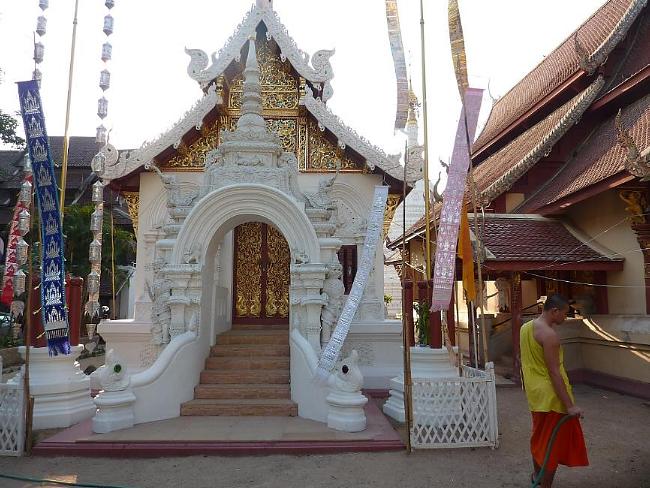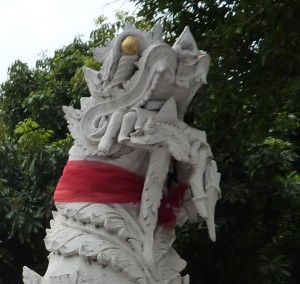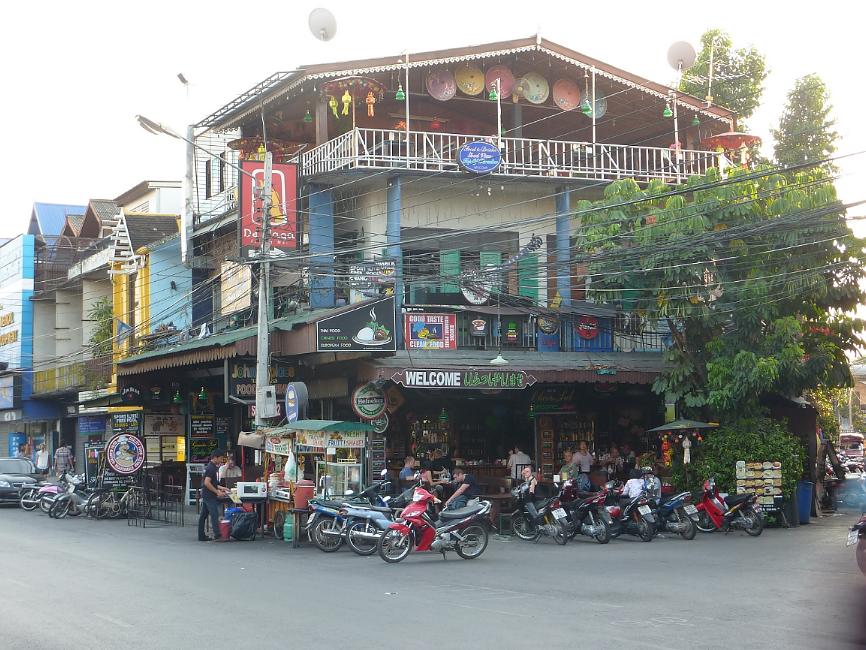Much like google crawls the web – that is how I explore a new location.  With some initial destination in mind, and vaguely mindful of how to find my way back to where I began, I head out. On foot, following whatever draws my attention, one link leading to the next.
With some initial destination in mind, and vaguely mindful of how to find my way back to where I began, I head out. On foot, following whatever draws my attention, one link leading to the next.
The structure of these back sois east of the Old City meanders quite a bit, and studying the map I can see that finding my way home may present problems. So I head north by the most direct route, to the nearest major street. This is Tha Phae Road – pronounced ta pay. As long as I retrace my steps, I will have no problem.
And so the discoveries begin. At the corner of my soi and Tha Phae Road is a temple. I had heard that Chiang Mai is stuffed full of temples, and this proves to be quite an understatement. Wat Mahawan is noted in the guide book as an excellent example of the Shan-Burmese style of temple – many of the temples here were built by Burmese teak traders who located in Chiang Mai. The Wat Mahawan compound is thought to date back to the 1600s, with the characteristic Burmese structures added in the mid to late 1800s.
Nagas are mythical half dragon, half snake creatures which guard the entrances to the temples. These fierce sculptures are found everywhere in Chiang Mai, in many different styles. This five headed naga sits in front of the main viharn at Wat Mahawan.
 Having been suitably terrified by the nagas of Wat Mahawan, I continued on to the west, toward the Old City.
Having been suitably terrified by the nagas of Wat Mahawan, I continued on to the west, toward the Old City.
As I walk toward the old city I happen across the cluster of book shops, an area I’d eventually have sought out intentionally. That is the joy of this random sort of exploration – so many of the places I would make a point of seeing appear in front of me with no special effort. The number of shops is fairly astonishing and the prevalence of English language books is impressive. Both of these facts are evidence that Chiang Mai has become a haven for Western expats.
In fact, my initial impression of Chiang Mai is that it is as much Western as Asian in character. I don’t altogether like this actually, though I can understand how this polyglot culture feels so appealing to prospective expatriots. A couple of other observations also relate to the high number of expats – for one the traffic is so different from that I’ve seen anywhere else in Southeast Asia. It is in some subtle way quite different from Bangkok, in much the same way that Saigon is different from Hanoi. It has a fast, much more Western style aggressive nature. Drivers move more quickly than the conditions seem to warrant and are more aggressive in trying to fake out pedestrians and bicyclists.
The other notable evidence of the high expat population is the dogs. There are more owned dogs, very few street dogs, and they are all very well fed. Too well fed. In most of Asia dogs are dogs and people are people, and the urgent need to feed people is the greater priority.
The old city occupies a square area, with each side running just under one mile (1.5 k). Most of the brick walls which protected the city are gone, but remnants survive at the corners, and have been reconstructed with massive gates, at the midpoints. Tha Phae Road leads directly to the eastern gate. Outside of the remnants of the walls are restored moats. The road system is now modernized with two one way ring roads – one inside the walls, and another outside the moats.
On this first late afternoon I continue on to the Tha Phae Gate where, if I don’t keep my gaze to myself, all sorts of flyers are pressed into my hands. I explore far enough into the Old City to get a feel for the place. Guesthouses are everywhere, and travel agents, and small restaurants. Street food is not so easy to find and I learn later that turning north would have brought me to a wealth of options.
After finding a meal, I am ready to wander back to my guesthouse, returning by the small sois which lace through the area between the main east-west streets.
Nighttime is approaching. Part of the reason for locating in this area of town is to allow me to easily go to the Night Bazaar. I will venture out, in the dark, as a separate journey. Finding one’s way in the daylight is easy. Finding one’s way at night may not be.



